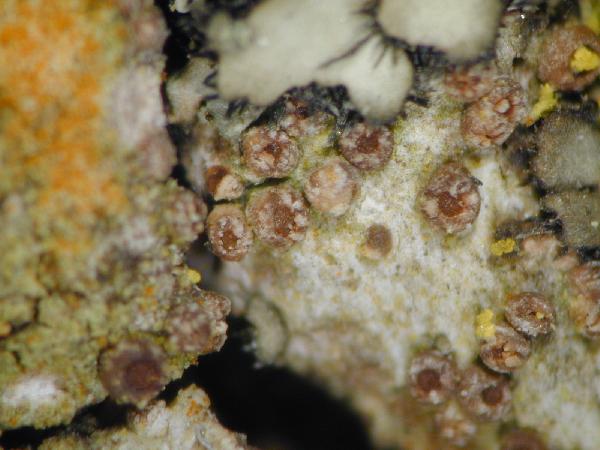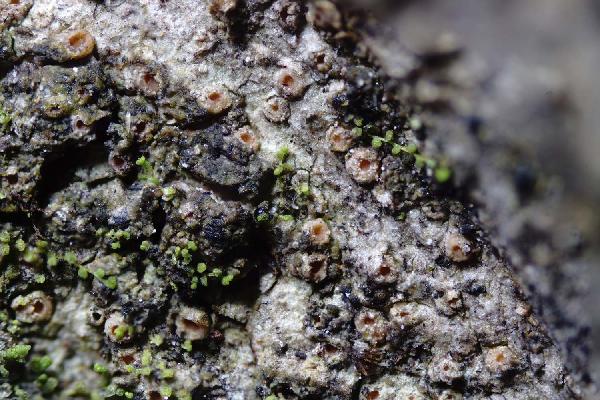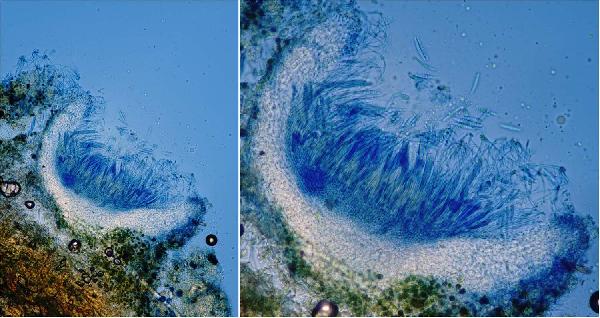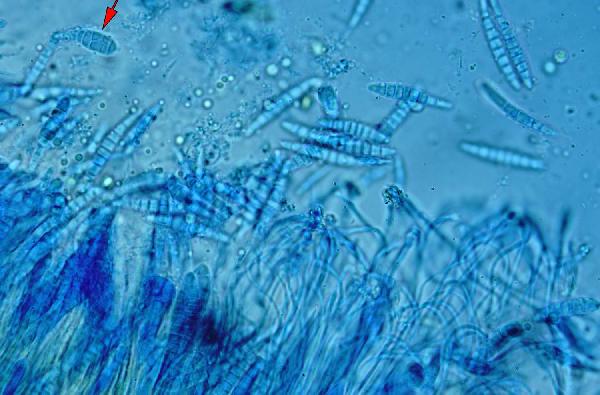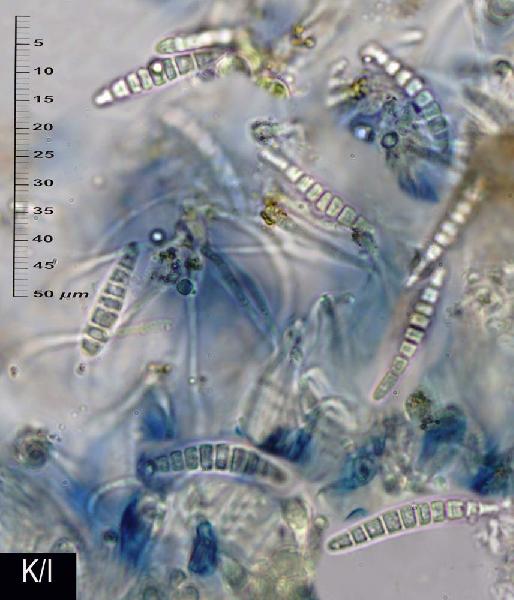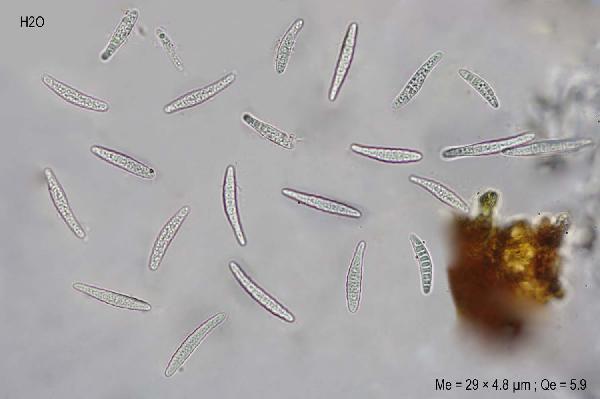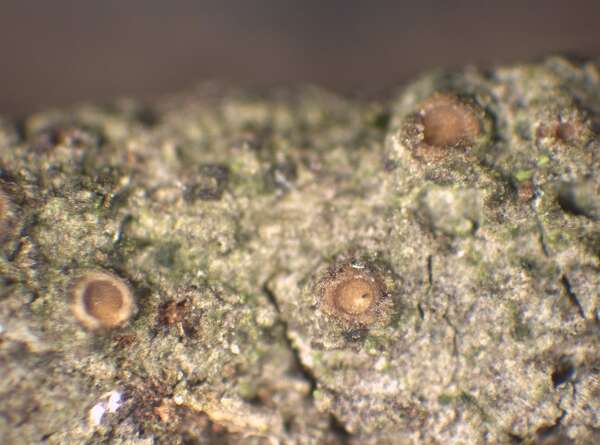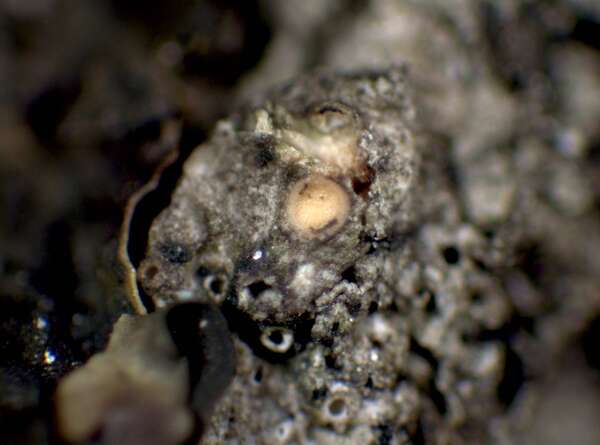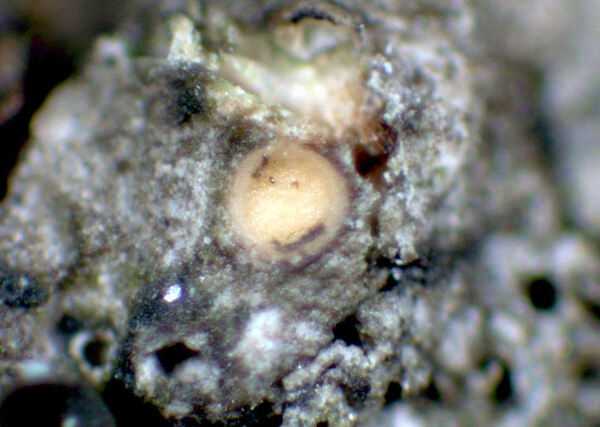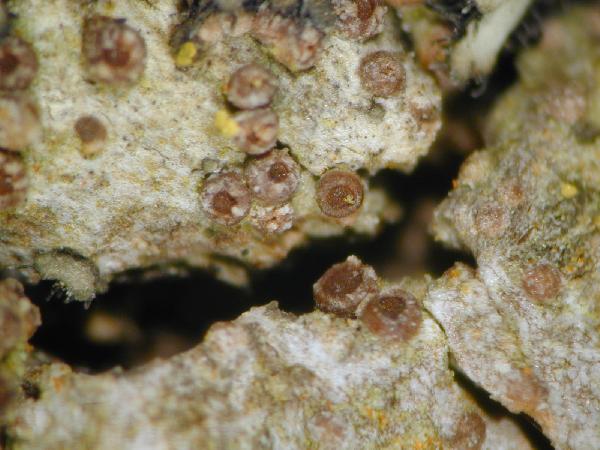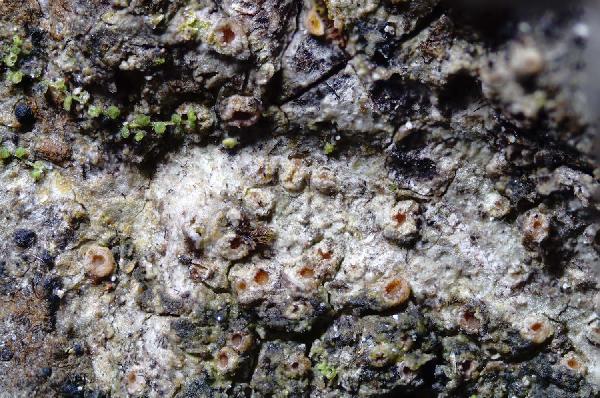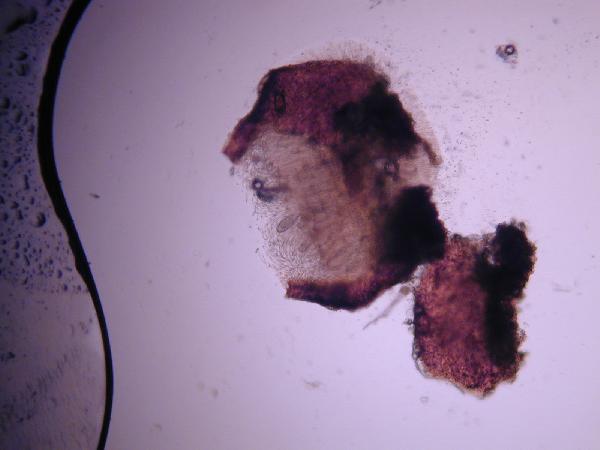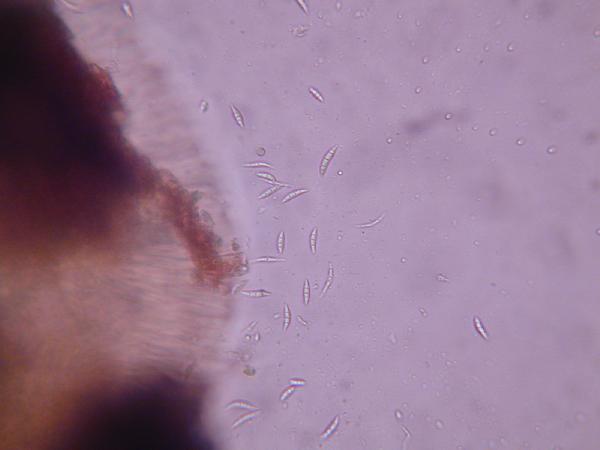Gyalecta derivata (Nyl.) H. Olivier
Bull. Géogr. Bot., 21: 193, 1911. Basionym: Lecidea derivata Nyl. - Flora, 48: 603, 1865.
Synonyms: Gyalecta croatica Zahlbr.; Gyalecta decipiens Samp.; Gyalecta truncigena var. croatica (Zahlbr.) Vězda; Gyalecta truncigena var. derivata (Nyl.) Boistel
Distribution: C - Tosc, Umb (Ravera 1999, Ravera & al. 2006), Laz (Massari & Ravera 2002, Ravera 2006c, Munzi & al. 2012), Abr (Caporale & al. 2009, Corona & al. 2016), Mol (Paoli & al. 2015), Sar (Cossu 2013). S - Camp (Ravera & al. 2021), Bas ( CLU 5170), Cal (Puntillo 1996), Si (Nimis & al. 1994, Ravera & al. 2023b).
Description: Thallus crustose, endosubstratic or thinly episubstratic, whitish, pale grey to green-grey, usually poorly evident. Apothecia 0.2-0.4 mm across, at first more or less immersed and urceolate, later becoming half-emergent, with a concave, flesh-coloured to dull orange, rarely dark brown to finally brown-black disc and a thick, raised, usually smooth proper margin. Proper exciple thick, colourless or pale brown in outer part, not consisting of angular cells; epithecium hardly differentiated from the hymenium; hymenium colourless; paraphyses mostly simple, septate, 1.2-1.5 μm thick at mid-level, the apical cells hardly swollen; hypothecium colourless. Asci 8-spored, thin-walled, lacking an apical apparatus or tholus, K/I+ blue. Ascospores (5-)7-13-transversally septate, rarely submuriform with 1-2 perpendicular longitudinal septa, hyaline, oblong-fusiform, (17-)20-31(-33) x (3-)4-7(-9) μm. Photobiont trentepohlioid. Spot tests: thallus and apothecia K-, C-, KC-, P-, UV-. Chemistry: without lichen substances.Note: a species of the G. truncigena-group with elongate-fusiform ascospores occasionally having 1-2 straight longitudinal septa, widespread in Europe and also known from Northern Africa, but rather rare, found on broad-leaved trees (especially Acer and Fraxinus) in humid areas; mostly Tyrrhenian in Italy (there are also scattered records from the Alps outside the Italian territory). It is included in the Italian red list of epiphytic lichens as “Near-threatened” (Nascimbene & al. 2013c).
Growth form: Crustose
Substrata: bark
Photobiont: Trentepohlia
Reproductive strategy: mainly sexual
Most common in areas with a humid-warm climate (e.g. most of Tyrrenian Italy)
Commonnes-rarity: (info)
Alpine belt: absent
Subalpine belt: absent
Oromediterranean belt: absent
Montane belt: extremely rare
Submediterranean belt: extremely rare
Padanian area: absent
Humid submediterranean belt: extremely rare
Humid mediterranean belt: very rare
Dry mediterranean belt: absent
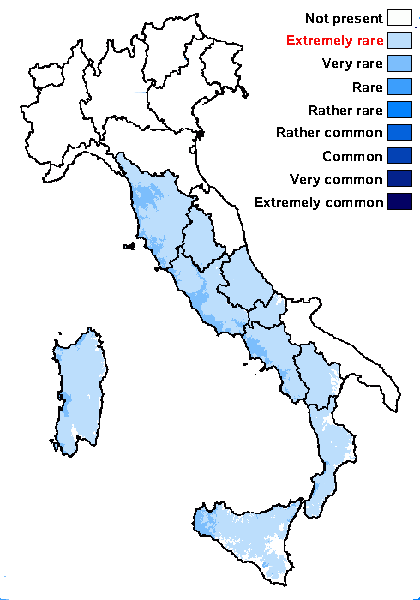
Predictive model
Herbarium samples
Growth form: Crustose
Substrata: bark
Photobiont: Trentepohlia
Reproductive strategy: mainly sexual
Most common in areas with a humid-warm climate (e.g. most of Tyrrenian Italy)
Commonnes-rarity: (info)
Alpine belt: absent
Subalpine belt: absent
Oromediterranean belt: absent
Montane belt: extremely rare
Submediterranean belt: extremely rare
Padanian area: absent
Humid submediterranean belt: extremely rare
Humid mediterranean belt: very rare
Dry mediterranean belt: absent

Predictive model
| Herbarium samples |
 INDEX FUNGORUM
INDEX FUNGORUM
 GBIF
GBIF
